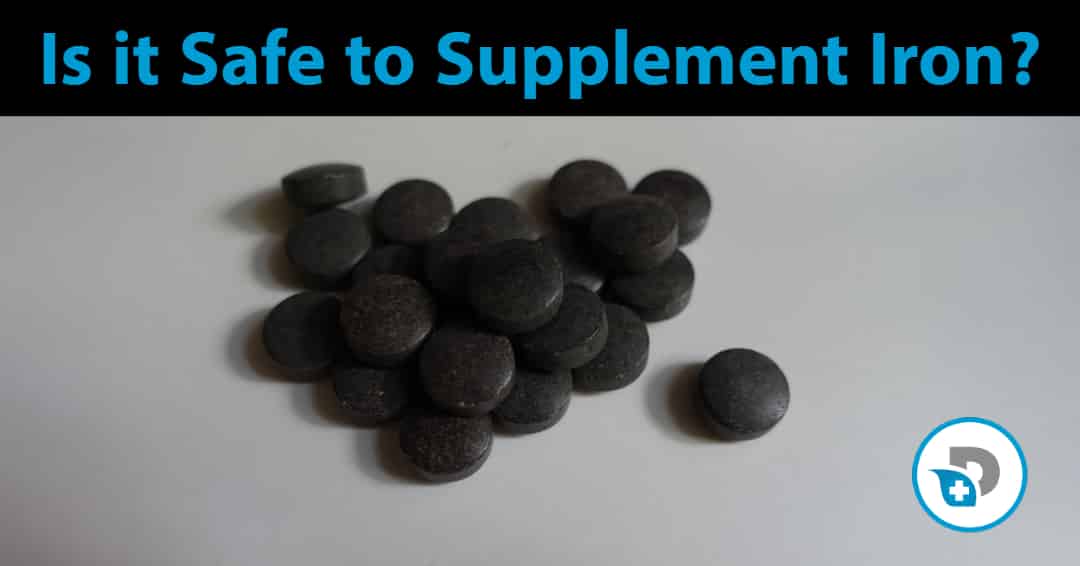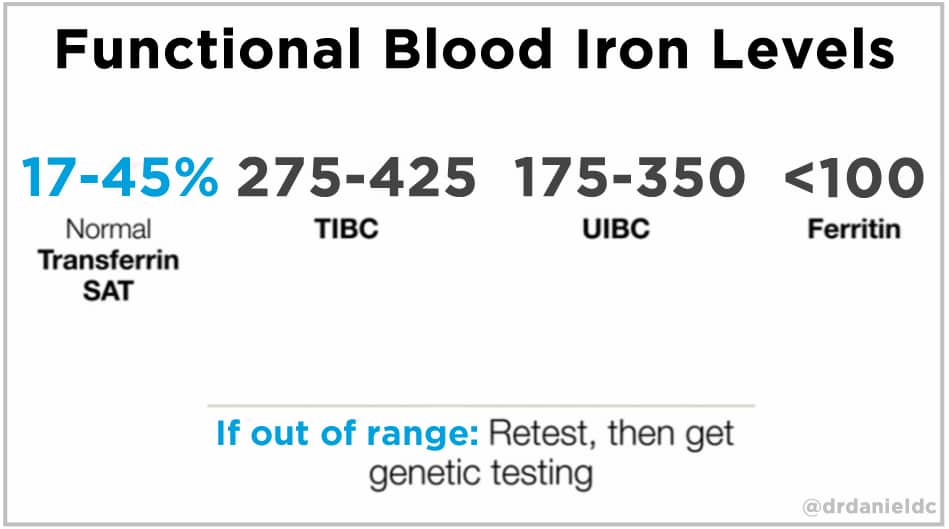
Is it safe to supplement iron?
- by Dr. Daniel
- Published on

I have many patients who ask what supplements they should be taking.
The answer to that question is largely dependent on that individuals current health status, health goals and lifestyle.
But what about the supplements you most likely SHOULDN'T be taking?
In this article, I'd like to talk about the supplements you should be cautious with and in some cases, never take (unless you absolutely know what you're doing).
Iron Supplements for Anemia
Iron is a part of several enzymes and proteins in the body, and it’s found in foods as both heme and nonheme iron.
Heme iron comes from hemoglobin and myoglobin in meat, poultry, and fish.
Despite being only 10 to 15 percent of the iron found in food, it makes up more than one-third of what we absorb.
Nonheme iron is found in plants, dairy products, and in some meats.
Unlike heme iron, nonheme iron absorption is significantly influenced by food components in the same meal.
These things include enhancers such as vitamin C and other acids as well as sources of heme iron and inhibitors such as phytic acid, polyphenols, and soy protein.

The recommended daily allowance for iron is 8 mg, except for in menstruating females, who need to get 18 mg, or pregnant women, who need to get 27 mg.
While iron is clearly an important nutrient, it is also essential to make sure you don't get too much of it.
Hemochromatosis is a genetic disorder that causes aggressive iron storage and iron overload.
It is associated with a broad range of adverse effects and health conditions such as liver disease, diabetes, metabolic syndrome, cardiovascular disease, Alzheimer’s dementia, Parkinson’s and other neurodegenerative disorders, impotence, infertility, and hypogonadism.
Why is Iron So Bad?
Because iron is a pro-oxidant.
Meaning it causes oxidative stress (damage), and it literally leads to the organs and tissues in our body rusting.
Another example of oxidative stress would be when you take a bite out of an apple, and you leave it out on the table, it turns brown.
That’s exactly what happens inside of our body when we have too much iron.

Optimize Iron Levels
A lesser known fact is that even mild iron overload (where iron levels are in the upper end of the reference range) can cause increased morbidity and mortality.
For example, the range for iron saturation in the U.S. typically goes up to about 55 percent, but studies show that increased mortality happens as iron saturation climbs above 50 percent.
Likewise, many of the lab ranges for ferritin in men go up to about 400 in the U.S. and in other parts of the industrialized world, but studies suggest that you see an increase in blood sugar and an increase in morbidity and mortality in men as ferritin climbs above 150 or 200.
These are people who don’t necessarily have hereditary hemochromatosis, or perhaps they are a carrier for hemochromatosis.
Iron overload is significantly associated in particular with impaired insulin sensitivity and glucose tolerance.
So If you have high blood sugar, you should definitely get checked or screened for iron overload.
Iron reduces insulin synthesis and secretion. It decreases insulin sensitivity in the liver, and iron deposits in the liver can decrease glucose uptake.

Above, you'll find my optimal ranges for the various iron indices.
They’re based on the recommendations from the Iron Disorders Institute, which is a group that advocates for greater understanding of the effects of both iron overload and iron deficiency.
If you have been diagnosed with metabolic disease, diabetes, metabolic syndrome, liver abnormalities, weakness, lethargy, or skin hyperpigmentation, and you have iron levels that are outside of these ranges —and remember TIBC and UIBC are inverse markers, so low levels of these mean high iron—then you should be thinking about hemochromatosis or iron overload.
Iron Overload Treatment
Treatment for iron overload is typically either blood donation or prescription phlebotomy.
Phlebotomy is the removal of blood, typically a unit of blood at one time. It’s the same when you donate blood or get a prescription for phlebotomy.
There is also a substance called apolactoferrin.
It’s a natural protein that can help remove iron from tissues in the body, iron that is already stored in the body.
The dosage there would be 300 mg of lactoferrin one to two times a day on an empty stomach.
Patients with hemochromatosis should not take supplements that contain iron.
Unfortunately, you’ll often see people with iron overload who weren’t aware that they had it who are taking iron supplements.
They may also need to avoid foods that are very high in iron.
The biggest offenders are shellfish and organ meats.
What I’ve found is that patients with iron overload definitely need to avoid shellfish and organ meats.
Some studies suggest that just standard muscle meat such as beef and bison don’t make a huge difference for most people, so we start by telling them to avoid the organ meats and the shellfish.
I also want to advise patients to cook with ceramic, stainless steel, or glass instead of iron skillets.
Finally, avoid substances that enhance the absorption of iron.
This includes limiting alcohol (limit consumption to two drinks a week), supplemental vitamin C, Betaine hydrochloric acid and high doses of zinc.


